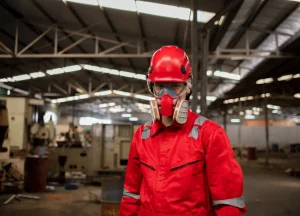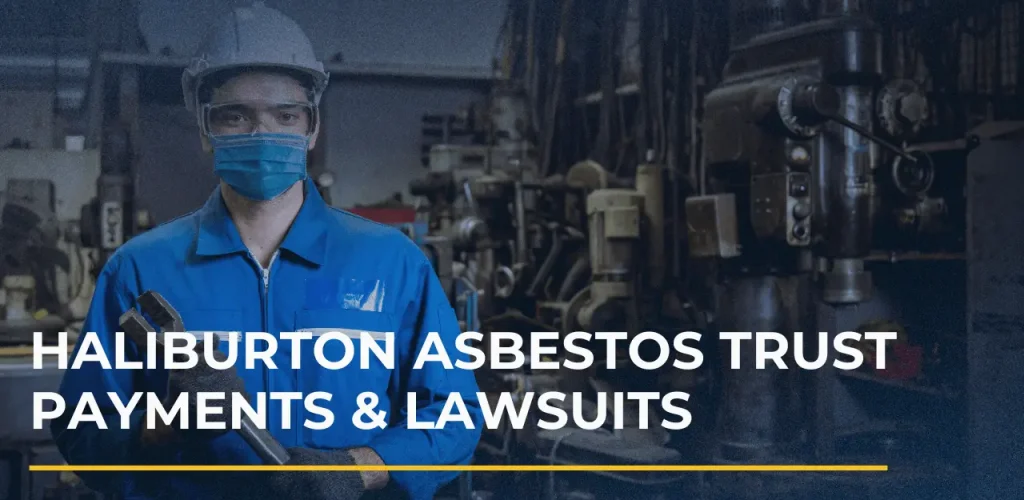The Halliburton asbestos issue remains a critical topic for those exposed to asbestos products through Halliburton’s operations. Over decades, workers and contractors developed serious illnesses such as mesothelioma, lung cancer, and asbestosis due to asbestos exposure. To address these claims, the Halliburton asbestos trust was established to compensate victims and their families.
Understanding the process, payment structure, and eligibility is essential for those pursuing a Halliburton asbestos lawsuit. This guide provides clarity on trust payments, legal steps, and how victims can navigate the complexities of asbestos litigation to secure the compensation they deserve.
Halliburton Asbestos Trust Payment Values (Disease Schedule)
The Halliburton asbestos trust uses a structured disease schedule to assign compensation values for each type of asbestos-related illness. These scheduled values help victims and their families understand potential recoveries for their claims.
| Disease Level & Category | Scheduled Value |
| Mesothelioma | $300,000 |
| Lung Cancer | $150,000 |
| Asbestosis | $100,000 |
It’s important to note that actual payouts from the trust often differ from these scheduled values. Like other asbestos trust funds, the Halliburton Asbestos Trust determines payments based on its Halliburton asbestos trust payment percentage, which reflects available funds and the total number of claims.
This means claimants may receive only a portion of the scheduled amount. Understanding the Halliburton asbestos trust payment percentage is key when pursuing a Halliburton asbestos lawsuit.
What is the Halliburton Asbestos Trust Payout Percentage in 2025?

As of September 2025, the Halliburton Asbestos Trust, established through the DII Industries, LLC Asbestos PI Trust, maintains a payment percentage of 60%. This means claimants receive 60% of the scheduled value assigned to their asbestos-related disease claims. This percentage is set to ensure the trust’s funds remain available for future claimants.
Halliburton Asbestos Trust Payment Breakdown (2025)
Below is a breakdown of the Halliburton asbestos trust payment percentage and the average payouts claimants can expect based on disease level and category:
| Disease Level & Category | Scheduled Value | Payment % (Current) | Typical Payout |
| Mesothelioma | $300,000 | 60% | $180,000 |
| Lung Cancer | $150,000 | 60% | $90,000 |
| Asbestosis | $100,000 | 60% | $60,000 |
Halliburton’s Payout Percentage vs Other Asbestos Trust
Payout percentages vary widely between asbestos trusts. The Halliburton Asbestos Trust currently pays at a rate of 60%, which is relatively consistent compared to other major asbestos trusts. However, some trusts offer higher payment percentages while others pay significantly less. This variation reflects differences in trust funding, claim volume, and administration costs.
Below is a comparison of Halliburton’s payout percentage against other large asbestos trusts:
| Asbestos Trust Fund | Scheduled Value (Mesothelioma) | Payment % | Actual Payout |
| Halliburton Asbestos Trust | $300,000 | 60% | $180,000 |
| Owens Corning Fiberglass | $325,000 | 40% | $130,000 |
| Pittsburgh Corning | $350,000 | 50% | $175,000 |
| W.R. Grace Asbestos Trust | $300,000 | 50% | $150,000 |
For a deeper look at all active asbestos trust funds and their payout rates, check out our Asbestos Trust Fund Payouts Guide.
Asbestos trust funds, such as the one established by Halliburton, represent an important legal pathway for victims to recover damages without prolonged litigation. They are a critical part of ensuring timely compensation for those harmed by decades of asbestos exposure.”
Halliburton Asbestos Products List
The following table shows Halliburton products that are known to have caused asbestos exposure for anyone who used them. If you used any of these products and have been diagnosed with an asbestos-related illness, you may be entitled to compensation.
| Product Category | Specific Products |
| Pumps | Worthington Horizontal Single Air and Steam Heating Vacuum “AE” and “AF” Pumps
Worthington Monobloc Centrifugal Pump and “DE” Monobloc Pump Worthington Split Case Centrifugal Horizontal Single Stage Volute Pump Types “R”, “L” and “U” Worthington Horizontal Duplex Piston Pattern Steam Pump “VA” and “VC” Pumps Worthington General Purpose “CF” Model Pump Dresser Pumps Ingersoll-Dresser Pumps Pacific Steam Turbopumps (used on passenger ships) |
| Compressors | Clark Compressors
Roots Compressors Worthington Compressors Dresser-Rand Compressors LeRoi Compressors |
| Turbines | Moore Turbines
Worthington Turbines Worthington-Moore Turbines Dresser-Rand Steam Turbines |
| Drilling Muds | IMCO Drilling Mud Styles: Diaseal M, Flosal, Shurlift, Super Best, Super Visbestos, Univis, Visbestos
Magcobar/Dresser Drilling Mud Styles: Diaseal M, Flosal, Olifaze, Visbestos, Visquick Baroid Drilling Mud Styles: Flosal, Diaseal M, Visbestos, Super Visbestos |
| Miscellaneous Products | Alco Locomotives
Bay State Abrasive Products Kellogg Brown & Root Mason Standard Reducing Valves Mid-Valley |
About the Halliburton Asbestos Lawsuit and Trust Fund

Halliburton’s involvement in asbestos litigation began in the 1970s. The first asbestos lawsuit against the company was filed in 1976, marking the onset of decades of asbestos-related legal challenges. Between 1976 and the early 2000s, Halliburton was named in over 474,000 asbestos claims, leading to significant financial settlements.
In 2003, facing mounting liabilities, Halliburton filed for Chapter 11 bankruptcy protection. Subsequently, in 2005, the company established the DII Industries, LLC Asbestos Personal Injury Trust Fund, initially funded with $5.1 billion, to compensate current and future asbestos claimants, Bailey Glasser.
When Did Halliburton Stop Using Asbestos?
Halliburton ceased using asbestos in its products in the early 1980s. However, due to the long latency period of asbestos-related diseases, individuals exposed to these products during that time continue to develop health issues, leading to ongoing claims and litigation.
How Much Money is Left in the Halliburton Trust?
As of September 2025, the DII Asbestos Personal Injury Trust Fund has approximately $2.775 billion remaining. This fund was established to compensate individuals harmed by asbestos exposure linked to Halliburton’s operations and its subsidiaries, including Dresser Industries and Kellogg Brown & Root Halliburton Investor Relations.
Who Can File an Asbestos Claim Against Halliburton?
Individuals who can file a claim against the Halliburton asbestos trust include:
- Workers who were directly employed by Halliburton or its subsidiaries and were exposed to asbestos-containing products.
- Household members of workers who might have been exposed to asbestos fibers brought home on clothing or equipment.
- Contractors and subcontractors who worked on Halliburton projects involving asbestos materials.
Claimants must provide medical documentation and evidence of exposure to qualify for compensation from the trust.
Filing Your Claim Today
At Danzinger & De Llano, LLP, we understand the lasting impact asbestos exposure can have on you and your family. Our team is committed to guiding clients through the complexities of filing a Halliburton asbestos claim. We work tirelessly to ensure victims receive the compensation they deserve. If you or a loved one were exposed to Halliburton asbestos products, we are here to help. Call us at 866-222-9990 or contact our mesothelioma lawyers online.
STAT: As of 2025, the Halliburton Asbestos Trust has paid over $2.3 billion to thousands of claimants, with a current payment percentage of 60% reflecting both the scope of asbestos exposure claims and the need to preserve trust funds for future victims.
Legal Disclaimer
The information provided is for educational and informational purposes only. The information on this website is not intended as legal advice and should not be used as a substitute for consulting a licensed attorney. Legal outcomes and laws can vary by jurisdiction, and only a qualified lawyer can provide guidance tailored to your situation.

